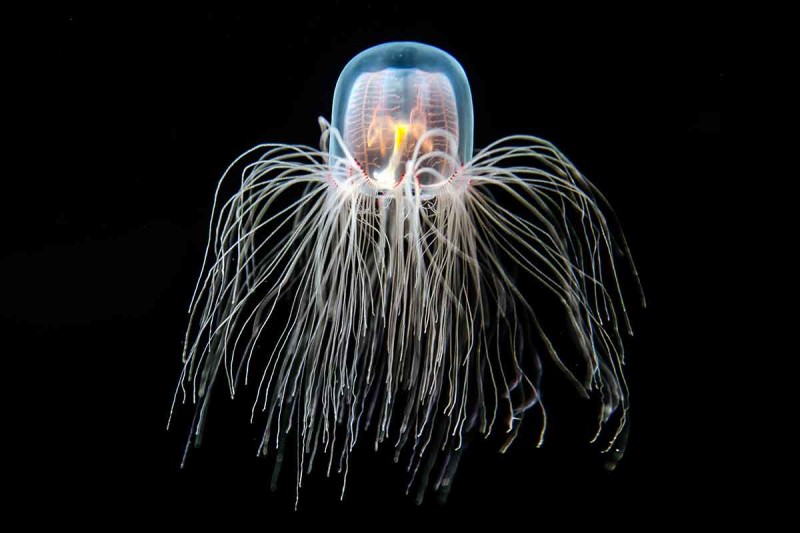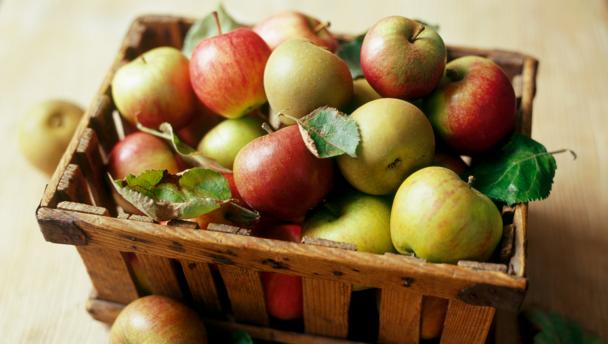There seems to be quite a lot in thus month’s round-up of links to items of interest which you may have missed the first time round. So let’s get straight in …
Science & Medicine
A lump of rock the size of a house is apparently going to whiz past Earth on 12 October at a distance of 44,000 km – that’s like an eighth of the way to the moon. And yes, astronomers are confident in the predicted distance so DON’T PANIC, but do take a towel!

And now to the more mundane … New Scientist has a rather spectacular feature on the variety of jellyfish in the oceans. You never knew they were so beautiful!
Octopus and squid have the unhelpful habit of producing ink to cover their escape. But why? And what is the ink?
Don’t breathalyse a goldfish. At least not in the winter. For you see they avoid being frozen to death by turning turning the lactic acid in their body into alcohol.
Now you don’t expect a new species to be discovered in the UK, and certainly not right under our noses. But it seems that our (not so common) grass snake is actualy two different species.
Most of us don’t like ants in our kitchens, however the humble ant is a rather amazing creature, as researchers are beginning to understand. And there are lots of them too!
Wasps! Yes they’re intensely irritating at this time of year. But that’s only the handful of social wasps we have; there are many thousands more species of solitary wasps. Without them we would be knee deep in creepy-crawlies as they are excellent predators of other insects (as well as your BBQ burger). They are also important pollinators. But surprisingly little is known about the UK’s wasps, which a citizen science project is now trying to delve into.
Incidentally ants, wasps and bees are all quite closely related and are all members of the order Hymenoptera.
Now to our pets! Very few animals can be said to know themselves, at least according to the standard test using a mirror. And on that scale dogs are not included. However it seems that they probably do know who they are using smell.
We all know that in emergency we can give CPR to our fellow humans. But did you know it works on cats and dogs too? Here and here are a couple of items on the subject.
And finally in this section … Medics are now coming to realise that some common surgical procedures are no better than a placebo, just as some drugs aren’t.
Social Sciences, Business, Law
Constant worry, anxiety and panic about the future now seems to be a part of everyday life. But it is counter-productive and leads to burn-out rather than action.
Art & Literature
Here’s one for your diary … Next Spring the National Portrait Gallery will be showing Lewis Carroll’s photographs of the real Alice among an exhibition of early Victorian portraits.
History, Archaeology & Anthropology

I wasn’t sure whether to put this under “science” or “history” … It appears that trigonometry wasn’t discovered by the Greeks, but around a millennium earlier by the Babylonians. As one might expect it was all recorded in cuneiform on clay tablets. And they used a totally different system from that used today. However, Evelyn Lamb in Scientific American has pointed out that in fact little of this is actually new knowledge.
You wouldn’t really expect biologists to be doing research on ancient manuscripts, but they are … and they’re discovering all sorts of odd things about the parchment, the book covers and even the monks who did the calligraphy.
While on the medieval, and in other research, historians are coming to realsie that many of the supposedly iconic medieval images of the plague are nothing of the sort.
London
Did you know that for just £10 you can visit the Royal Mews and see all the Queen’s horses and carriages?
Lifestyle & Personal Development
Author Kasey Edwards discovers that so many people would like not to be married and just stay together for all sorts of reasons – but she isn’t one of them.
Berlin is designing new unisex urinals for its unisex public toilets.
Food & Drink
And finally … another that could have gone under “science” … geneticists have been hard at work on the apple and have traced its roots back along the Silk Road to Kazakhstan and China. The Romans may have brought the desert apple to England, but it had a long journey before that.

As usual more next month!
